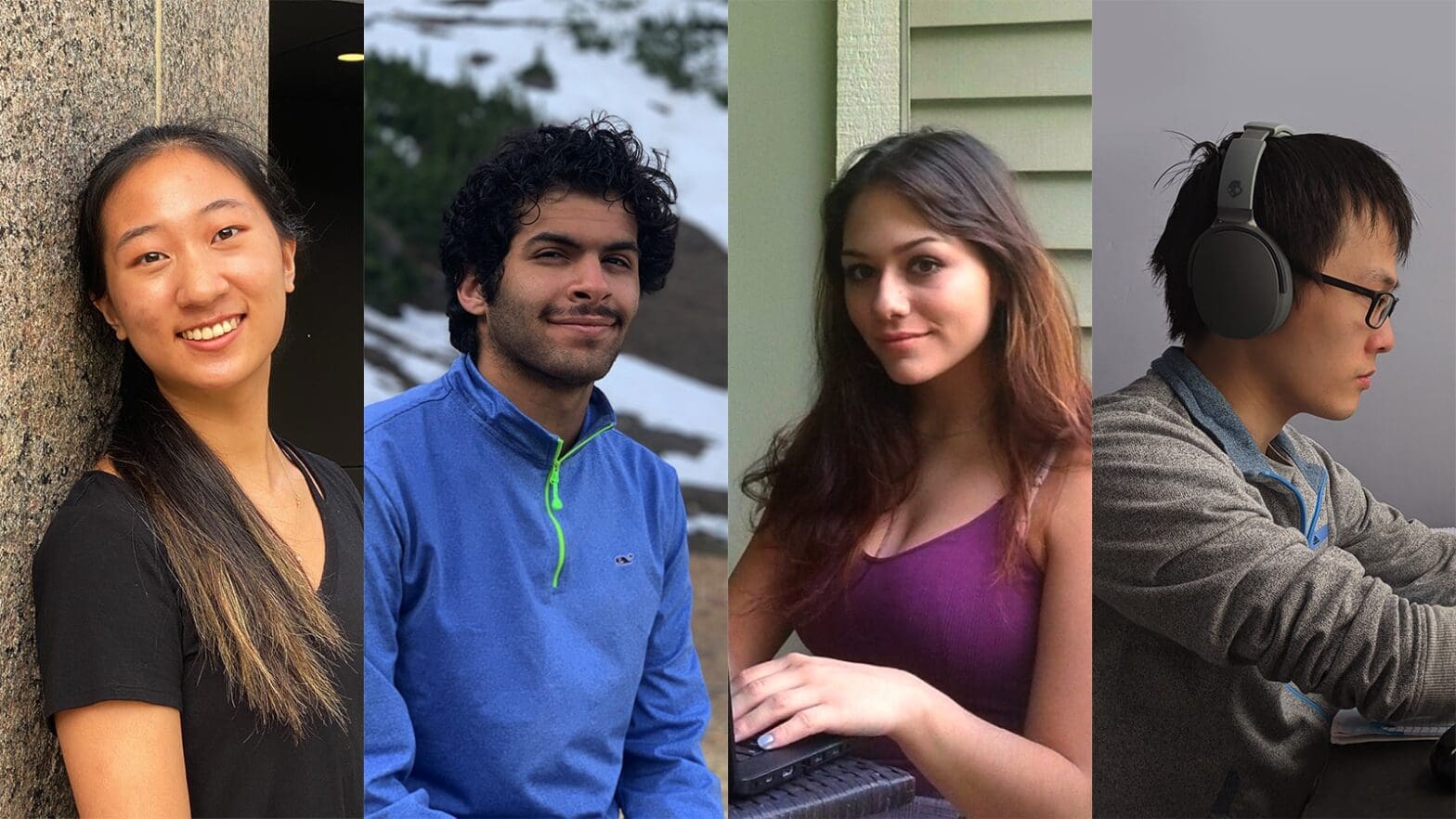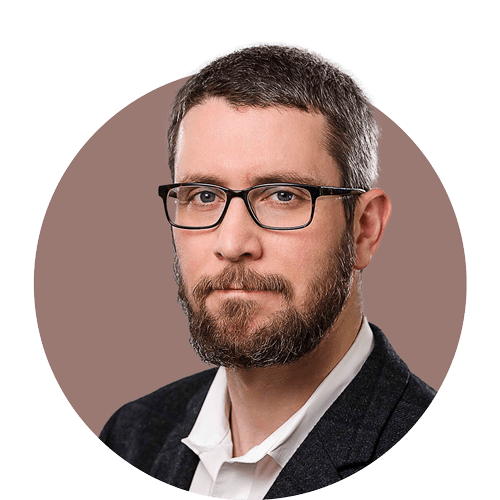
Students step up summer research, with increased support, amid pandemic’s challenges
By
on
In response to increased need, the School of Engineering and Applied Science and several of the school’s departments boosted their support for faculty-advised summer research projects. Students explored topics including strategies for making public spaces safer, unequal impacts of air quality changes, and the biomechanics of disease in the brain.
Musab Almajnouni and Vincent Yang: Could LEDs Aid the Fight Against COVID?
Musab Almajnouni didn’t have a back-up plan for summer. He was joining a team of biologists in Madagascar, where he would use his computational skills to study disease. So, when the coronavirus pandemic swept those plans aside, forcing him home to Riyadh, Saudi Arabia, he had no idea what would come next.
That’s when he got an email from his mentor, Claire Gmachl, the Eugene Higgins Professor of Electrical Engineering. She had an idea for a project that she wanted undergraduate students to lead, and reached out to Almajnouni to gauge his interest.
“I just want to state this, and I’ll probably repeat it, but she’s a fantastic professor,” Almajnouni said of Gmachl. He first got to know her in a first-year engineering course, which sparked enough interest for him to turn from finance to electrical engineering. “She’s always made herself available for students to really get to know the material she’s teaching.”
With that rapport established, the following summer he interned in the Gmachl lab on a biomedical sensing project, where he learned up close the ins and outs of optics research and developed strong relationships with his colleagues.
But this next project was something different. Almajnouni teamed up with his fellow junior in electrical engineering, Vincent Yang, whose plans to intern at BAE Systems had also fallen through due to the pandemic. They would work directly under Gmachl on a project to understand how ultraviolet light emitting diodes might be used to disinfect public spaces. It wasn’t a trip to Madagascar or a defense security clearance, but it seemed like a golden opportunity for the two students to put their skills to use in the fight against the very disease that had crashed their plans.
“What caught my eye specifically was the application of our research topic to COVID-19,” Yang said. “Given than I lost my expected summer job to COVID, and recognizing the massive impact on people around the world, I was motivated to contribute.”
Over the summer, the two Slacked and Zoomed their way through a mountain of literature on the subject. In addition to regular lab group meetings, twice a week Almajnouni and Yang met online with Gmachl to parse their questions and find the essential thread to move ever deeper into the subject. After a preliminary review, they began developing a model for more efficient UV-emitting devices.
“Musab and Vincent were such amazing researchers,” Gmachl said. “They always were a step ahead of me in exploring and evaluating various device geometries.”
This project was one of six funded by the Stephen C. Johnson Slingshot Fund for Innovation, an unprecedented effort by electrical engineering to support faculty-advised summer research for its undergraduate students.
Yang took the lead in working out the optical simulations through a computer modeling tool, adjusting the geometries by a few nanometers at a time until the numbers matched their needs, which Almajnouni helped define through his research of the materials. By summer’s end, they had identified a wavelength of ultraviolet light that shows evidence of being both safe and effective for public spaces. This fall they are continuing the work as independent research, with a goal of drawing their analysis toward the design of a useful device. The team believes LEDs could one day transform the health and safety of public spaces. But the research is far from conclusive.
“The next step is to just write a paper and try to publish it and see where it takes the scientific community,” Almajnouni said.
Natasha Montiel: Exposing New Jersey’s air quality disparities
Natasha Montiel has seen firsthand how air pollution can impact health. Both of her parents have chronic health conditions affecting their respiratory systems, and she’s noticed that “slight changes in the air quality that might not affect me or my sister would affect them,” said Montiel, a junior concentrating in civil and environmental engineering.
As a project for a spring 2020 course on global air pollution, Montiel examined air quality data from a monitoring station near her family’s home in Albany, New York — including tracking the potential effects of the COVID-19 pandemic on pollution levels. During the summer, Montiel expanded the project to New Jersey and surrounding regions, gathering data from 1990 to 2015 and investigating correlations between air quality and socioeconomic disparities.
Researchers have previously shown that low-income areas tend to have worse air quality, most notably around West Coast cities such as Los Angeles and Oakland, California. “It’s quite unique to have this done in New Jersey because it’s a small, densely populated state” that might be assumed to have little geographic variation in air quality, said Mark Zondlo, an associate professor of civil and environmental engineering and Montiel’s adviser on the project.
Montiel synthesized data on major pollutant levels from satellite measurements and about 100 ground monitoring stations in and around New Jersey, and examined correlations with neighborhood-level U.S. census data on household income, poverty levels and households receiving food stamps through the Supplemental Nutrition Assistance Program. She focused on trends in the best and worst 10% of air quality days each year, which are more likely to hint at health impacts than average values.
While long-lived pollutants such as ozone had similar levels in different regions, shorter-lived nitrogen dioxide tended to occur at lower levels in higher-income areas, and at higher levels in low-income areas. Nitrogen dioxide “generally comes from burning fuels in vehicles and power plants, so places with a lot of factories or a lot of traffic tend to have higher levels,” said Montiel. She also found that since 1990, lower-income areas have seen more overall improvement in air quality than higher-income areas — mainly because higher-income areas had better air quality to begin with.
The project was a valuable lesson in “how to look at a large set of data and decide exactly what you want from it and how to organize that in your own way,” said Montiel, adding that she learned to be “meticulously careful with which data I’m choosing” when gleaning information from government websites, where data from different time periods or places is often found in varying formats.
Montiel’s summer research was funded by the engineering school’s Project X innovation fund, which supported 15 undergraduate research projects this year, up from nine projects in 2019.
Angela Yang: Squid brains and the mechanics of degeneration
Somewhere in mile three, Angela Yang got a stitch in her side. Curious what caused the nagging pain, the seventh-grade cross-country star went home and began wading precociously into the medical literature. She didn’t know it at the time, but these would be her first steps down the path to what is now a prospective career in scientific research.
During summer, Yang, a senior in chemical and biological engineering (CBE), embarked on a project with far deeper impacts. Through the Reiner G. Stoll Undergraduate Summer Fellowship in Chemical Engineering, she studied squid brain proteins to understand the mechanics at play in neurodegenerative diseases such as ALS.
Working in Professor Cliff Brangwynne’s Soft Living Matter Group, she developed a computer simulation of protein reactions used to edit RNA, and she co-wrote a literature review on the subject. This combination of summer work — the model and the review — provided the foundation for her senior thesis, an experimental project.
“In an experiment, there are so many different directions that you can take. What I was doing with the simulation is seeing what was feasible for me to understand,” Yang said. “And it helped me design my senior thesis as I developed the model.”
Yang was one of 10 CBE students who pursued research in a Princeton lab during the summer, including seven Stoll Fellows and three student researchers supported by the ReMatch+ Summer Program.
This relatively large number of student researchers on campus last summer (in the summer of 2019 there were three in CBE) came at a time when the COVID-19 pandemic foreclosed many internship and research opportunities. To increase support during the crisis, and to meet the rise in demand, the department awarded a record number of fellowships for 2020.
Many of those projects have grown into thesis research. And the department, like other departments across engineering, has continued to find innovative ways to support student research despite the remote-learning conditions.










